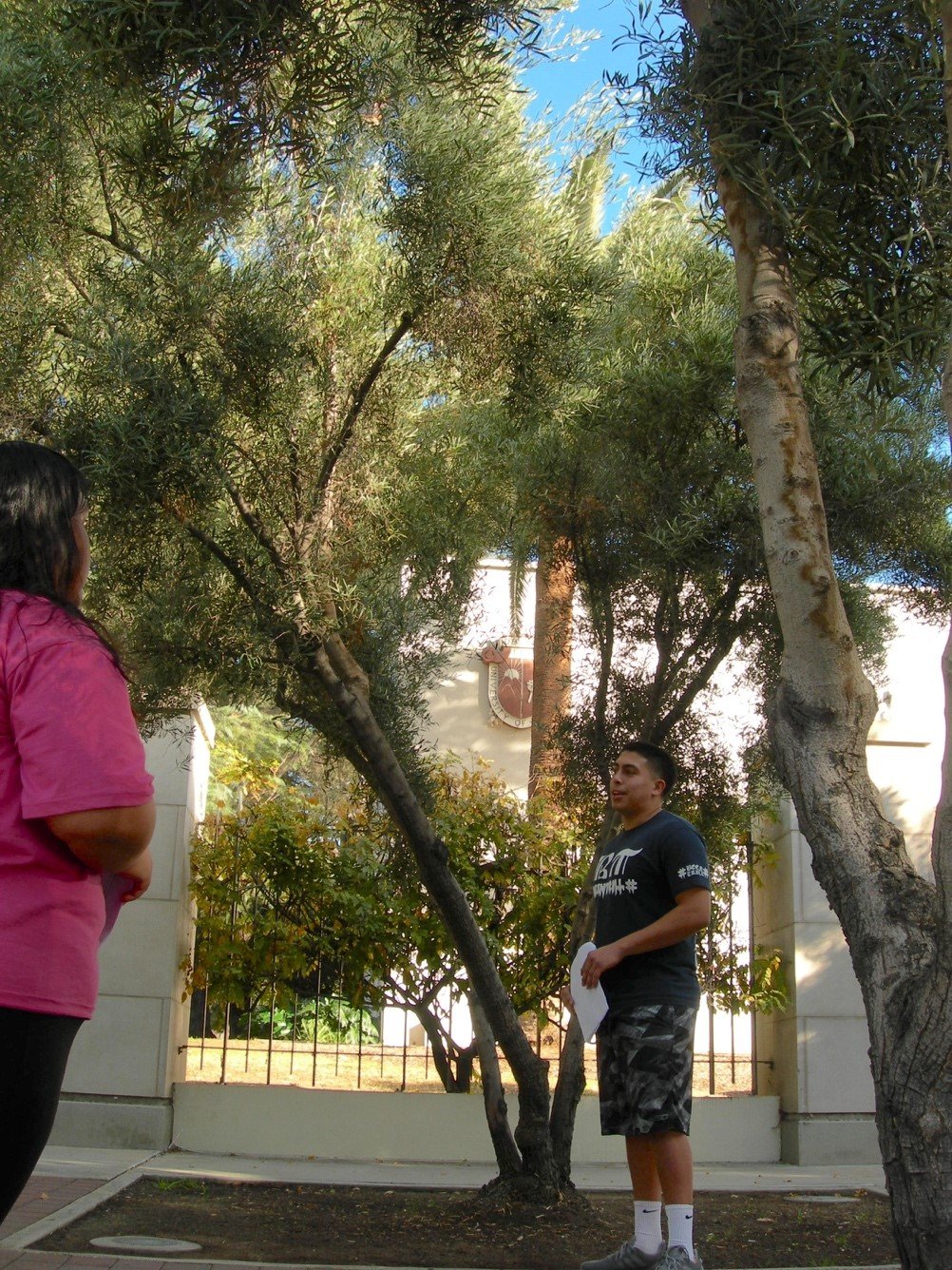University of Redlands Emergency Alert System
Alert Received: . For more information, visit: https://www.redlands.edu/alert/
University of Redlands
Common Name: Olive
Scientific Name: Olea europaea
Family: Oleaceae
Identification
Habit: The average height of the olive tree ranges from 20-30 ft (6–9 m) tall. The spread of the tree is 15-25 ft (4.5-7.5 m). Crown has an oval shape.
Leaves: Leaves of the olive tree are thick, leathery, and lance shaped. The leaves are oppositely arranged. Towards the top of the tree the leaves are a bright green color. The lower leaves are dark green.
Twigs & Bark: When the tree is young, it has smooth, grey bark. As the tree ages the bark becomes rough and the trunk of the tree often twists. The twigs of the tree are smooth.
Flowers & Fruits: Flowers on the olive tree grow in small clusters which usually include 15 to 30 small, white, and fragrant flowers. The fruit (olive) is a drupe that is on average 0.8-1 inch (2-2.5 cm) long. A central pit encloses the seed. A mature seed is covered with a thin, oil-rich fruit that is a black or purplish color.

Where it’s from
Native Range: The olive tree is native across the Mediterranean region, as well as Africa and Asia. It grows best in Mediterranean-type climates. The Chaparral biome that the olive trees live in have warm/dry summers with mild/wet winters.
Ecological Notes: The seeds of the olive tree are dispersed by birds. Some diseases the tree is susceptible to are verticillium wilt, olive knot, diplodia canker, leaf spot, and fruit mummification.
What we use it for
Olive trees have been cultivated for its fruit and oil for thousands of years. Olives and olive oil are used and sold mainly for cooking as it is used in a large number of dishes. In 2016/2017, about 2.63 million metric tons of olive oil was consumed. The wood of the olive tree is also commonly used in high-end furniture, veneer, and turned objects.
References
Biographer
Isaiah Archuleta ’21, FYS 20: Plants in Our World, Fall 2017